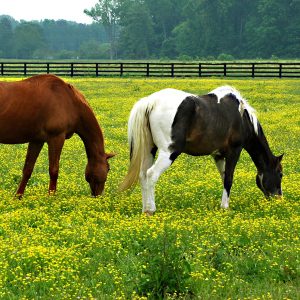
Buttercup Toxicity in Horses
Those pretty yellow flowers can cause problems in your pasture.
Buttercup is a bright yellow flower found in pastures throughout North America. They thrive in areas that have been overgrazed. Horses usually avoid eating them because they are very bitter.
Buttercups release a toxic oil called protoanemonin. Toxicity levels vary with plant type and maturity. They are most toxic during the early stages of growth and remain dangerous through the flowering stage. Depending on where you live, you see Buttercups from April to August. If cut and baled with hay, the oil quickly dissipates and the plant no longer presents a danger.
Signs of Buttercup toxicity:
Mild cases
- Blister on lips
- Swelling of face
- Excessive salivation
- Mild colic
- Diarrhea that might be bloody
Severe cases
- Twitching of the skin
- Paralysis
- Convulsions
The best way to avoid problems is to irradiate the weed by spraying or mechanical removal. Proper pasture management that includes rotational grazing, fertilization and reseeding will help keep your pasture healthy and weed-free.


